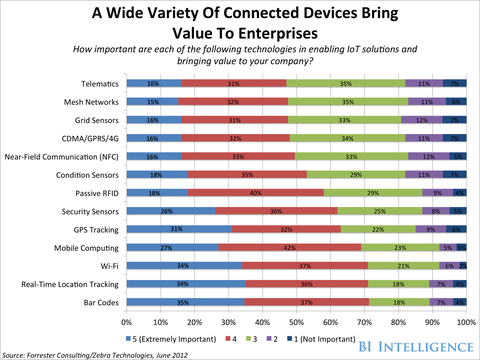Contents:


If the company uses more debt than equity, the higher will be the financial leverage ratio. Typically, the debt incurred by the company is compared to metrics related to cash flow, assets, and total capitalization, which collectively help gauge the company’s credit risk (i.e. risk of default). As a point of departure, we noted earlier that debt is the cheapest capital component.
In his 1971 textbook, Van Horne said that, «one of the most dramatic examples of what does mm mean leverage is in the airline industry, where a large portion of total costs are fixed.» By the end of Year 5, the net debt-to-EBITDA ratio is marginally lower than the total debt-to-EBITDA ratio due to the diminished cash balance. Leverage ratios set a ceiling on the debt levels of a company, whereas coverage ratios set a minimum floor that the company’s cash flow cannot fall below. The purpose is to assess if the company’s cash flows can adequately handle existing debt obligations. The more predictable the cash flows of the company and consistent its historical profitability has been, the greater its debt capacity and tolerance for a higher debt-to-equity mix. The inherent assumption in the net debt-to-capital ratio is that the cash on the B/S can be used to help pay down existing debt – thus the total debt amount is adjusted to account for the available cash balance.
Leverage (finance)
Financial leverage is a strategy used to potentially increase returns. Investors use borrowed funds intending to expand gains from an investment. Not just a tool for investors, leverage is used by businesses to launch as well as fund growth. It is mostly used to boost the returns on equity capital of a company, especially when the business is unable to increase its operating efficiency and returns on total investment. Because earning on borrowing is higher than interest payable on debt, the company’s total earnings will increase, ultimately boosting the earnings of stockholders. Brokers may demand additional funds when the value of securities held declines.
What is ‘Buying the Dip’ and how can you do it? – IG
What is ‘Buying the Dip’ and how can you do it?.
Posted: Tue, 04 Apr 2023 07:00:00 GMT [source]
Basel II attempted to limit economic leverage rather than accounting leverage. It required advanced banks to estimate the risk of their positions and allocate capital accordingly. While this is much more rational in theory, it is more subject to estimation error, both honest and opportunitistic. The poor performance of many banks during the financial crisis of 2007–2009 led to calls to reimpose leverage limits, by which most people meant accounting leverage limits, if they understood the distinction at all. National regulators began imposing formal capital requirements in the 1980s, and by 1988 most large multinational banks were held to the Basel I standard. Basel I categorized assets into five risk buckets, and mandated minimum capital requirements for each.
Global Business Consulting.
The senior debt ratio is important to track because senior lenders are more likely to place covenants – albeit, such restrictions have loosened across the past decade (i.e. “covenant-lite” loans). Note that if you ever hear someone refer to the “leverage ratio” without any further context, it is safe to assume that they are talking about the debt-to-EBITDA ratio. Note that the use of leverage is neither inherently good nor bad – instead, the issue is “excess” debt, in which the negative effects of debt financing become very apparent. The key to understanding the appropriate amount of operating leverage lies in analysis of the break-even point. At the core of degree of operating leverage is the same concept discussed in the example above. Financial leverage is defined as the ratio of operating income to net income.

Shadow banks’ collateralised funding is also considered a risk because it can lead to high levels of financial leverage. The swimming pool company wants to double its business in the next year but does not have enough retained earnings to actualize that goal. It decides to take out a business loan to finance the growth it would like to achieve. For example, Uber leverages supply and demand in order to fuel its business model. In 2019 fintech trends, European banks are leveraging data to innovate the industry. And, you can learn the basics of financial leverage in this article and leverage that knowledge to advance your career.
SVB debacle – presentation of AFS and HTM securities, effect of interest rate on bond valuation
In other words, a company with higher operating leverage has the potential to generate much larger profits than a company with lower operating leverage. Therefore, operating leverage is used much more than financial leverage for these types of firms. The use of borrowed funds with a contractually determined return to increase the ability of a business to invest and earn an expected higher return . The financial leverage index is a measure of the proportion of the company’s debt compared to equity. When looking at a company’s financial leverage index, keep this point in mind.
Financial leverage ratios tell us about the ability of any business whether it can meet its long-term debt obligations or not. These obligations can be anything like interest payments on the debt amount, the principal cost on the debt amount, or any other kind of fixed obligations like lease payments of the business. Operating leverage is defined as the ratio of fixed costs to variable costs incurred by a company in a specific period. If the fixed costs exceed the amount of variable costs, a company is considered to have high operating leverage.
Equity Multiplier
Businesses leverage their operations by using fixed cost inputs when revenues are expected to be variable. An increase in revenue will result in a larger increase in operating profit. Able Company uses $1,000,000 of its own cash to buy a factory, which generates $150,000 of annual profits. The company is not using financial leverage at all, since it incurred no debt to buy the factory. While the Debt to Equity Ratio is the most commonly used leverage ratio, the above three ratios are also used frequently in corporate finance to measure a company’s leverage.
- Traders also aren’t limited to the same requirements as average investors.
- This can be achieved by various means, such as increasing the sales, reducing the costs, or raising the prices.
- The more equity you have, the more money you’ll pocket when it comes time to sell.
- However, this calculation helps evaluate the debt which a company is still obligated to repay.
- Adam Hayes, Ph.D., CFA, is a financial writer with 15+ years Wall Street experience as a derivatives trader.
- In this case, the goal is to turn a profit after buying a property, sprucing it up and putting it back on the market.
Financial Statement A financial statement is a summary report, which shows how a company has used the funds… Balance Sheet In accounting, the balance sheet definition refers to the financial statement that reports… To determine the level of existing debt, borrowing can be compared against assets, equity, income, and operating expenses. The idea is to borrow funds and then to invest those funds at a rate of return that exceeds theinterest rateon the loan. If the investor is able to borrow money at 5%, and then invest it at 7%, that investor can pocket the difference. And if such an opportunity exists, the investor would want to lever up as much as possible – that is, borrow as much money as possible at 5% to invest at 7%.
In Finance, “risk” is defined as volatility of earnings or return, by which here it is meant EPS and ROE. Using the data for EBIT and ROE/EPS on the prior pages, graph below the two cases provided. (You may plot EPS and ROE congruently with one another.) You will observe a “crossover point,” i.e., a point at which both cases produce the same EBIT, on the horizontal axis. Note that when the projected EBIT exceeds the crossover point, the company’s projected EPS and ROE are more favorable if leverage is employed – and vice versa. At its simplest, leverage is a tactic geared at multiplying gains and losses. By this definition the use of leverage creates risk, and thus will always necessitate a tradeoff between risk and return.
Financial Leverage
Both financial and operating leverage emerge from the base of fixed costs. That’s to say, operating leverage appears where there is a fixed financial charge . Just as operating leverage results from the existence of operating expenses in the enterprise’s income stream, financial leverage results from the presence of fixed financial charges in the firm’s income stream. If all goes well, you’ll repay your borrowed funds quickly and snag investment returns in the process.
During https://1investing.in/s of recession, however, it may cause serious cash flow problems. If the sales volume is significant, it is beneficial to invest in securities bearing the fixed cost. Therefore, it is suggested to have a trade-off between debt and equity so that the shareholders’ interest is not affected adversely. The variability of sales level or due to fixed financing cost affects the level of EPS . This situation is called unfavorable financial leverage or negative financial leverage. Your investment has the potential to improve your quality of life, such as buying a home you love or starting a meaningful business.

As the returns are not guaranteed in financial leverages, there are chances of losing a more incredible amount than the initial capital investment in the business. Its need arises when a company expects that the returns generated from the purchased asset will be greater than the cost of borrowing, commonly known as the interest expense. It is calculated by dividing a company’s total debt by the shareholder’s equity. If ROI is equal to the cost of debt financing, it is not advisable to borrow funds because the company may not be able to generate surplus earnings by debt financing. If ROI is less than the cost of debt financing, it is not worthwhile to seek debt financing because losses get increased and the benefits to shareholders get decreased.
Since the cheapest source of funds is debt capital, increasing debt would be best. It would also provide leverage for the shareholders, providing higher EPS and ROE, and share price – in theory. This framework may be used in corporate investment planning, i.e., the conceptual means by which an accepted capital project may be financed. We use the concept of “incrementalism” here to evaluate how much additional capital is needed and whether the requirement should involve debt or equity . Thus, the $200,000 capital figure alluded to in this example, may be incremental and for the sole purpose of financing a particular capital project.